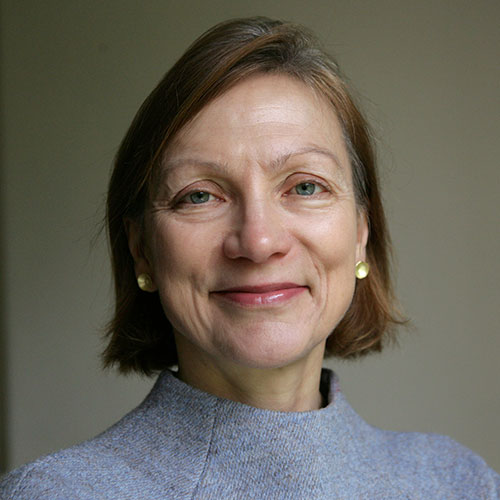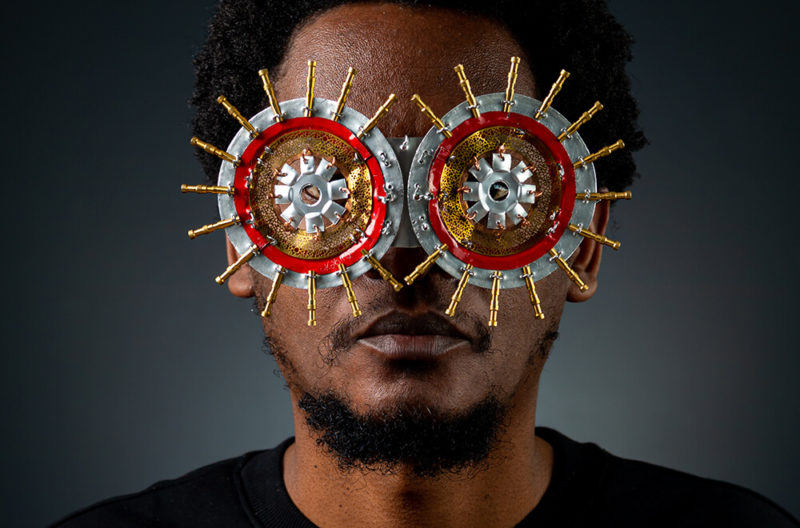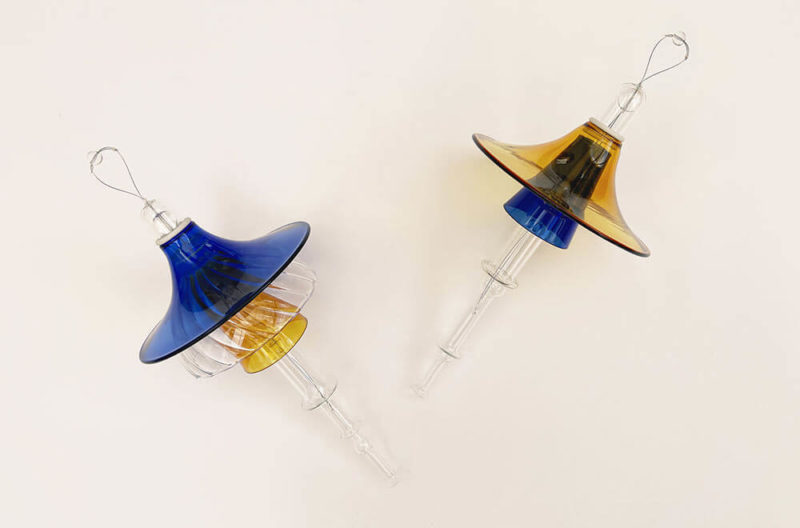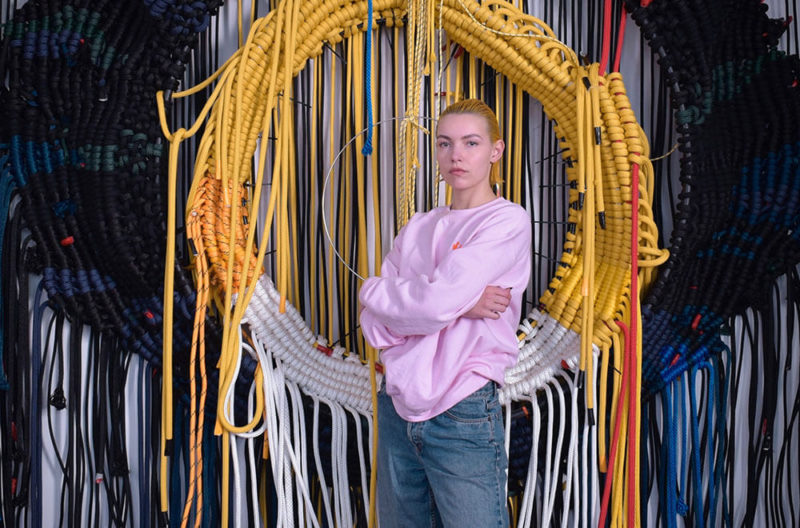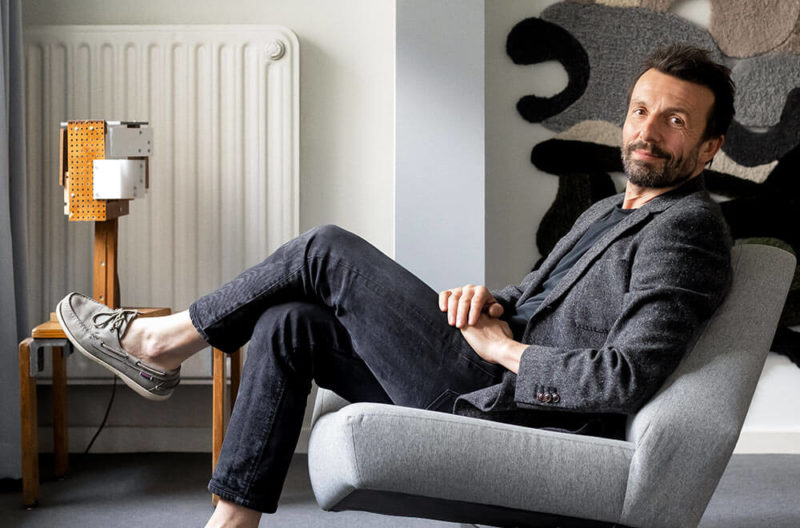The New Figuration. Curated by Glenn Adamson
As Friedman Benda's latest survey show prepares to open, Adamson lays out his thinking with Emma Crichton-Miller, Editor of TDE.
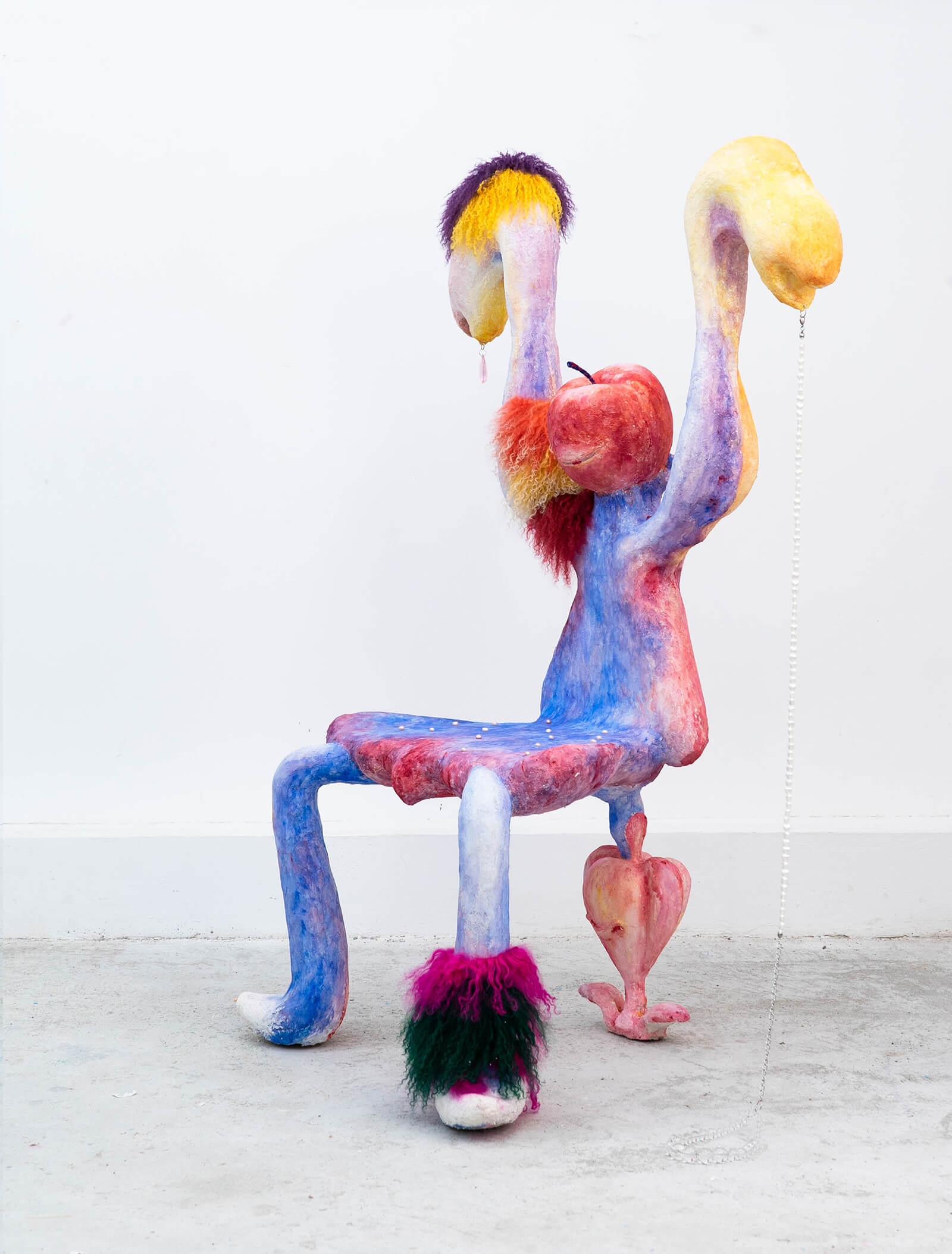
Yining Fei, ‘Duke of Apple in the Vile Oubliette’, 2020
COURTESY: Yining Fei & Friedman Benda
Emma Crichton-Miller: There is a long history of figuration in the decorative arts, but where do you date this new movement of figuration in furniture design from?
Glenn Adamson: There is really just one moment after the advent of modernism when it became a wave, in the late sixties – with people like Nicola L, Marisol, Gaetano Pesce and Kate Millett. Apart from that period, it’s very difficult to find viable figurative furniture in the twentieth century. It’s quite striking, especially because the anthropomorphic or gynomorphic metaphor in furniture is so dominant – seats, backs, legs, arms. It feels like there was a repression, an erasure.
Marc [Benda] spotted this before I did. He had seen the work of Saelia Aparicio and Anna Aagaard Jensen and had thought, “What’s going on here?” And then, last year, we both noticed Chris Schanck suddenly doing this explicitly figural work, almost edging into kitsch, or cartoon. It was at that point that we started to look around for other artists.

Chris Schanck, ‘Narcissus’, 2020
COURTESY: Chris Schanck & Friedman Benda
EC-M: How have you drawn the boundaries?
GA: We are definitely focussing on human figuration rather than zoomorphism. And that connects to the other big topic here – identity politics, particularly with regard to gender, which is still a huge issue in design because of the male dominated nature of the field. We are very interested in particular to see these young female designers using figuration in a way that seemed to express a feminist position, and I think Anna Jensen would be the most obvious example of that – only women are invited to use her furniture – but this is definitely true of Saelia Aparicio’s work as well. You could even look at Yining Fei and see her work as expressing, if not a kind of gender identity politics, then maybe a kind of generational identity politics; what it means to be caught between the digital and the analogue.
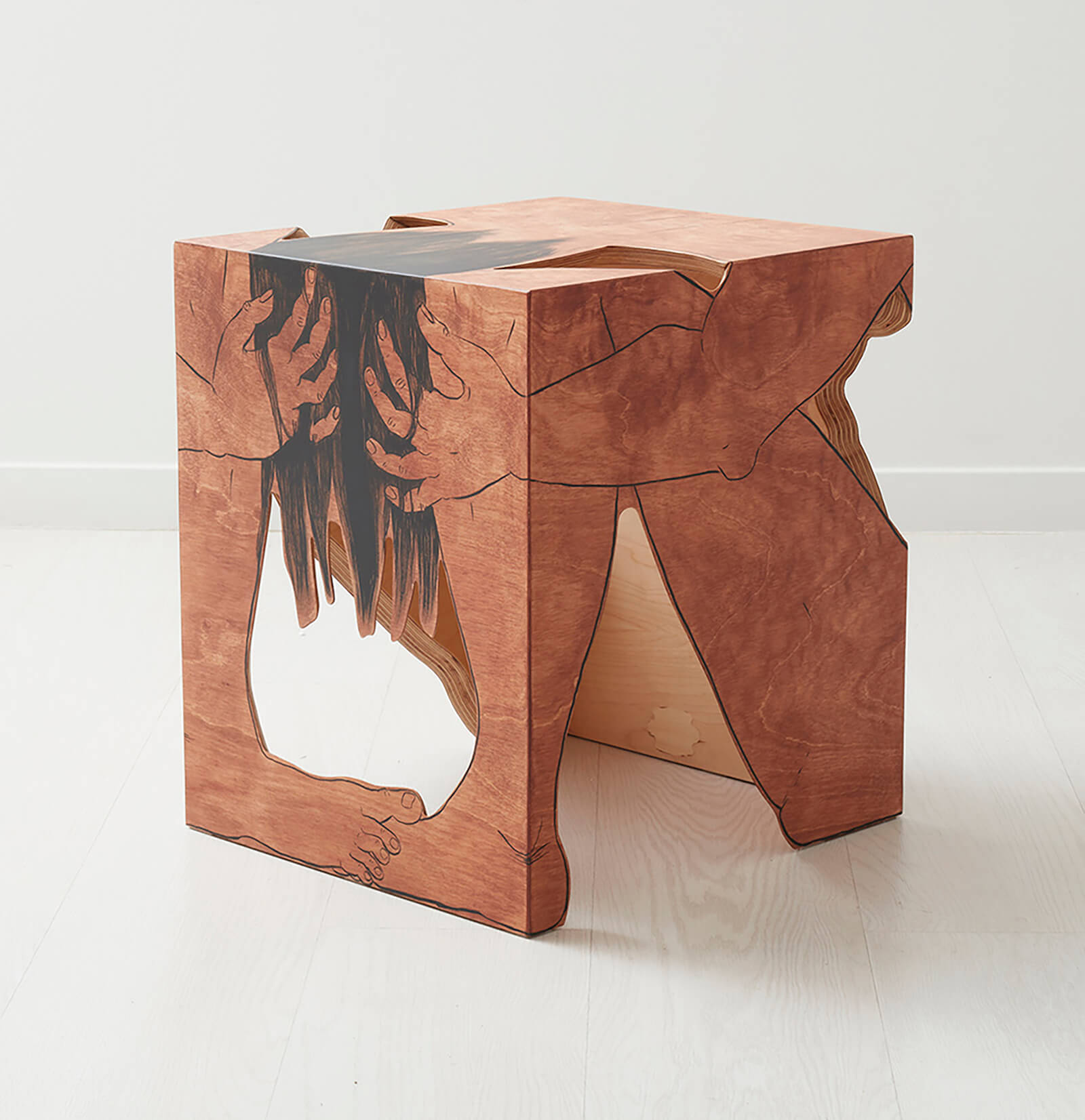
Saelia Aparicio, ‘Julia’, 2020
COURTESY: Julia Aparicio & Friedman Benda
Identity is now a cultural battleground and so it makes sense that design is being forced onto that terrain – and figuration seems to be a really great way of expressing those interests and concerns. It is also really important to notice the obvious influence of painting and sculpture on these designers. Figuration had been relegated to the margins of art history and a shift [towards a recuperation of figuration] has been going on for twenty years. It is quite clear that the transgressive potential figuration has had in painting is being replicated in the design field.
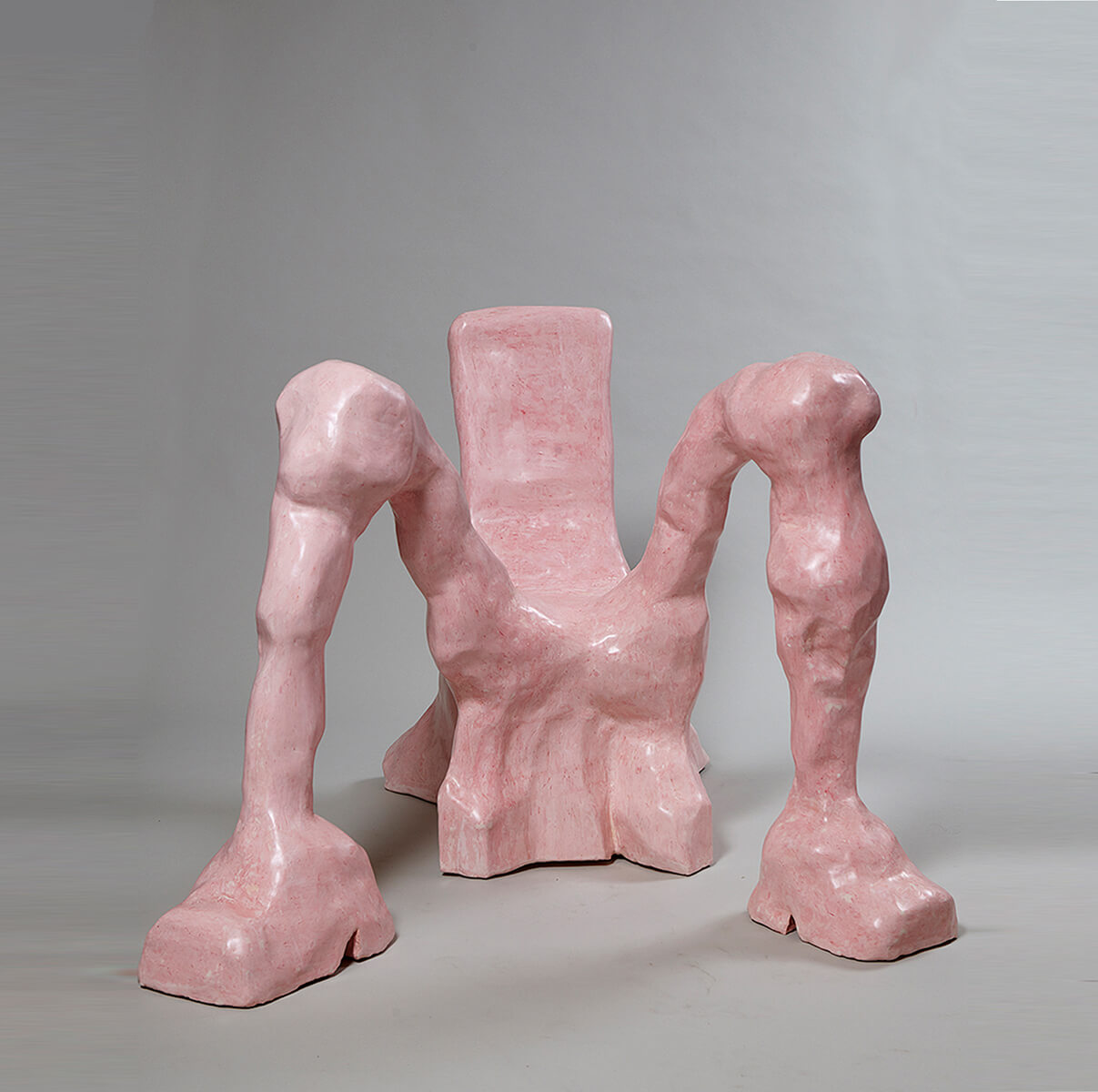
Anna Aagaard Jensen, ‘The Grand Lady’, 2018
COURTESY: Anna Aagaard Jensen & Friedman Benda
EC-M: Would you say that these works are effectively functional sculptures?
GA: Yes, but that in itself is not particularly innovative – Wendell Castle was doing that in 1962 – although you could say that it is an obvious consequence of the backdrop of design having such a strong sculptural impetus behind it. But it is more to do with individual identity and actual expression, and also maybe with a degree of concern about how objects inhabit our lives. The idea that an object is a psychological presence in your space – that seems to be a very important concern. Barbara Žilinskaitė says that it is her main consideration. She is really thinking about how you infuse an object with meaning. Again, this is not a new idea for designers, but her answer is to make it affective – infuse it with emotive qualities.
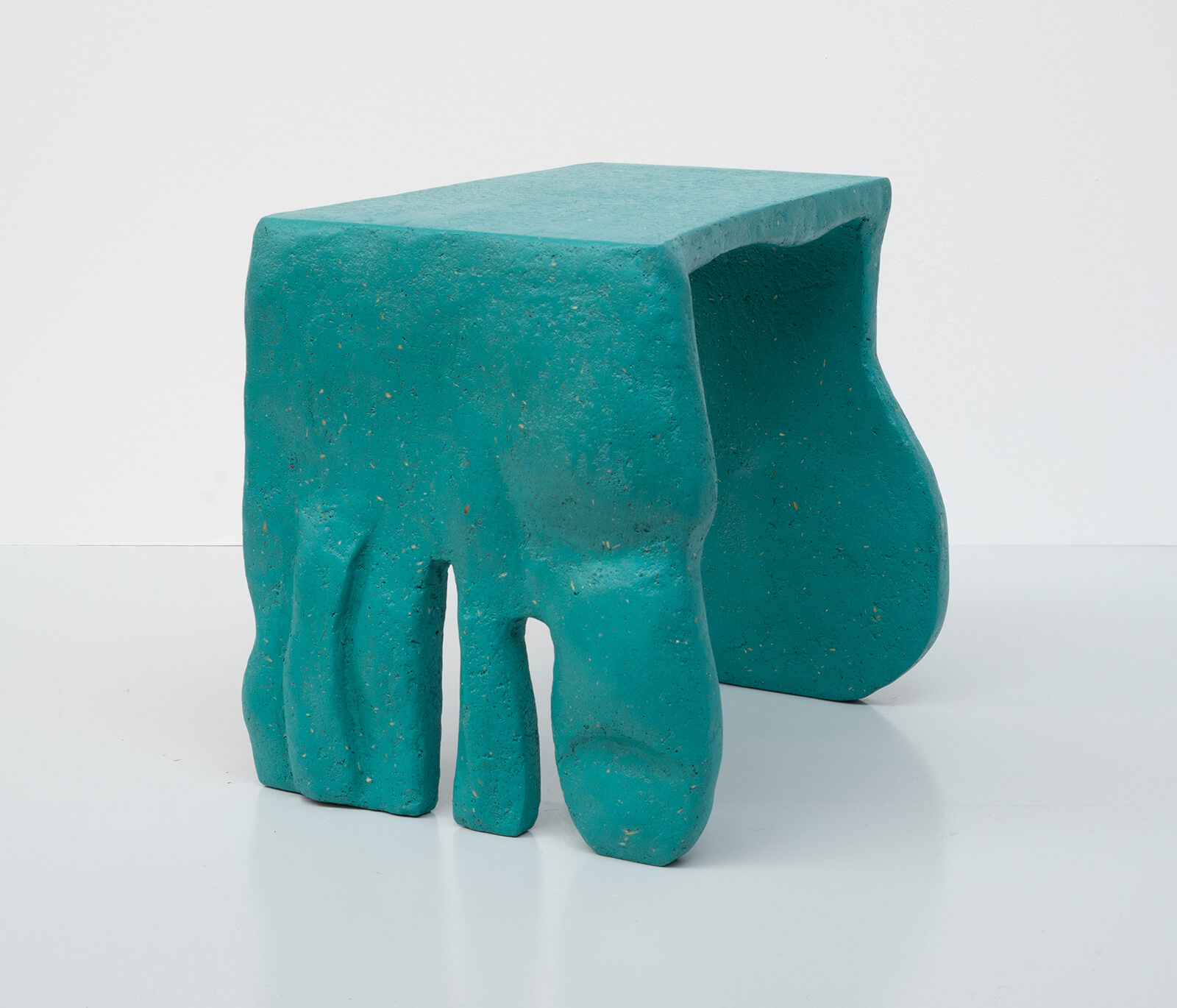
Barbora Žilinskaitė, ‘Roommates Stool’, 2020
COURTESY: Barbora Žilinskaitė & Friedman Benda
EC-M: That way you dramatise the role of these objects in our lives …
GA: There is also the question of narrative. We don’t think a lot about narrative being part of the design conversation, but of course once you have figuration you also have narrative, they come as a package. Here the emphasis is very much on characterisation, on the idea of furniture as being the protagonist. Which is interesting because in so far as the object is functional that means you are engaging with it almost on a person to person level.
EC-M: You are inviting a character into your home …
GA: That is very much Žilinskaitė’s way of thinking about this. Toomas Toomepuu, who is very new to the idea of figuration, has a point of departure that is more existential and art historical. His work reminds me of baroque sculpture. In that, it is similar to Chris Schanck’s work – and it is interesting that they are the two guys in the show.
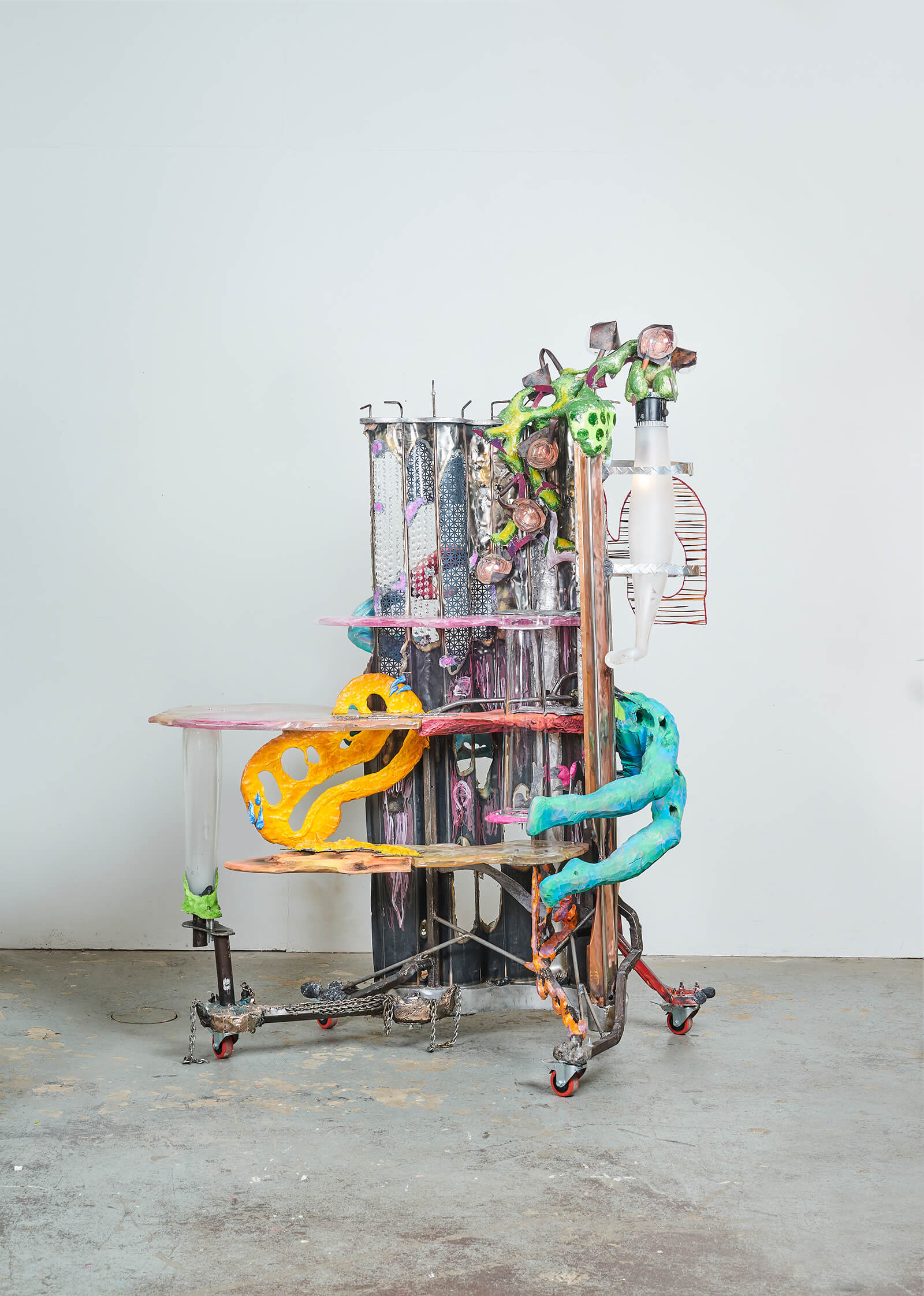
Toomas Toomepuu, ‘Call of the Void’, 2022
COURTESY: Toomas Toomepuu & Friedman Benda
“Toomas Toomepuu is very new to the idea of figuration – his point of departure is more existential …”
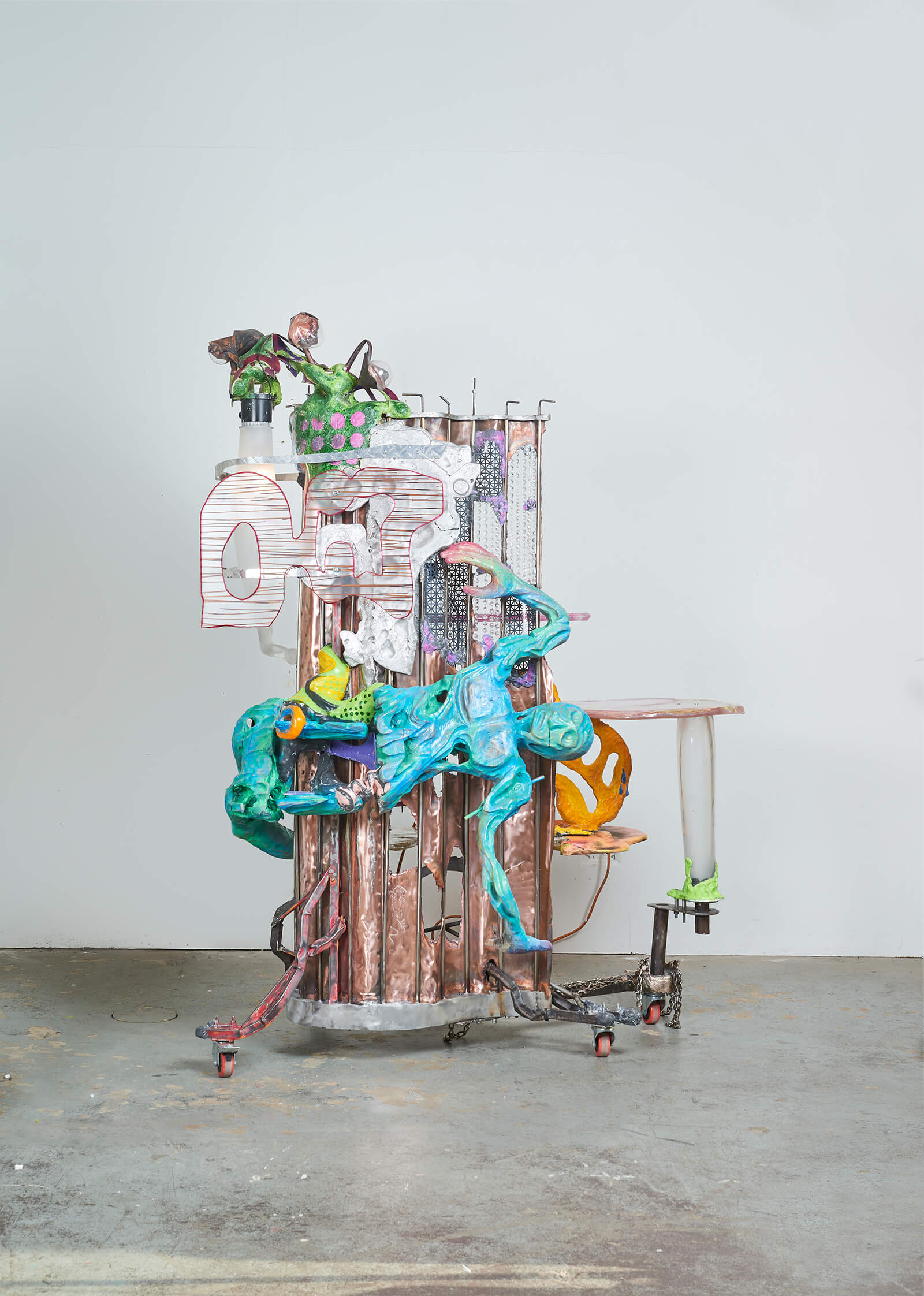
Toomas Toomepuu, ‘Call of the Void’, 2022
COURTESY: Toomas Toomepuu & Friedman Benda
“… and art historical. His work reminds me of baroque sculpture”
EC-M: Different designers obviously have different impulses …
GA: I think for them [Toomepuu and Schanck] it is more allegorical. Whereas for Anna Jensen it is more political, and for other artists in the show it is more personal or identity based. There is a palette of different motivations at work but they are landing in the same space. In terms of narrative another important person to mention would be Carmen d’Apollonio. She uses figuration to imply a fragment of a larger story. In a lot of ways she reminds me of Cindy Sherman and Sherman’s use of the film still, although the tactics are totally different. The narrative spilling out from the one image. And there is something about the compression of feeling she achieves in those lights that is very impressive. Among the artists in the show she is the one who has the strongest narrative impulse.
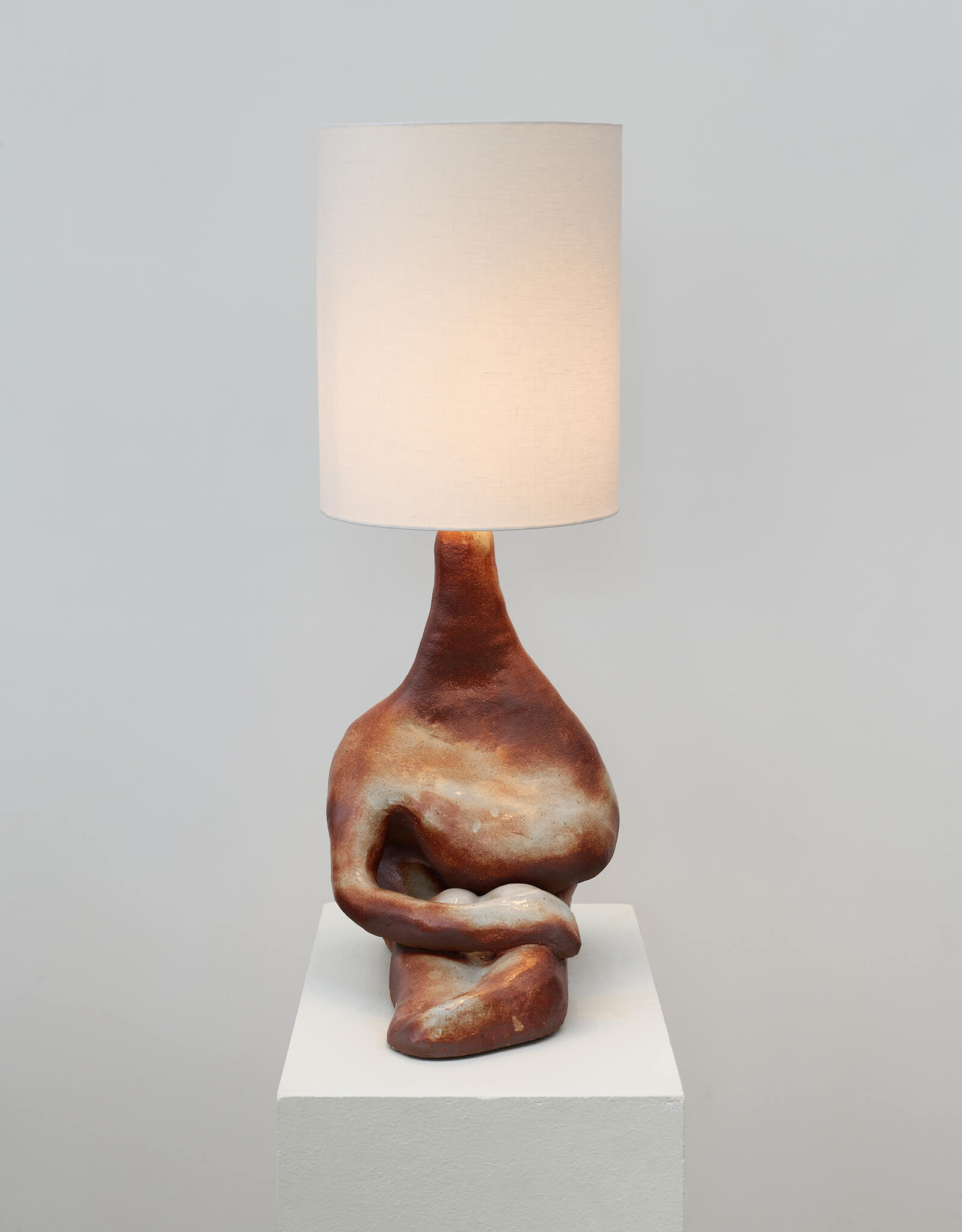
Carmen D’Apollonio, ‘Please don’t talk about me when I’m gone’, 2021
COURTESY: Carmen D’Apollonio & Friedman Benda
In fact, it’s interesting how all these different narrative forms are expressed in the show – for Chris Schanck I think it is more the graphic novel. And then for Yining Fei it is the video game and digital storytelling in the metaverse. So you have different narrative structures alluded to in the work.
EC-M: … and also different forms of figuration. There is no single way of predicting what happens when you take the human being and fictionalise it.
GA: Yes, and in some cases you have a certain degree of fantasy or even monstrousness that comes in. What happens to the body through the act of representing it, or thinking it through, that is another dynamic – and Yingyin Fei would be a good example of that. The head is an apple. So there is that kind of surrealistic substitution of parts.
The New Figuration. Curated by Glenn Adamson at Friedman Benda, New York, runs from 28th March – 19th April 2022.
